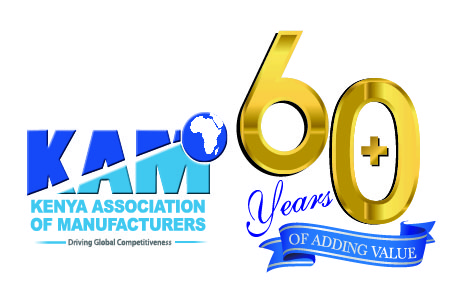Solve Port challenges to reduce Business Costs
By Phyllis Wakiaga,
On 19th February 2021, an international shipping company issued an advisory note to its customers, informing them that due to congestion at the Port of Mombasa, they will be implementing an emergency port congestion surcharge on worldwide cargo bound to, and from Kenya, effective in February, until further notice.
This means that importers, who include manufacturers, will have to compensate the shipping line for the time lost in the delivery of goods at the Port, due to inefficiencies that neither the importer nor the shipping line has control over.
Ports are a fundamental part of global trade. Kenya’s Port of Mombasa not only serves the country but also an extensive hinterland consisting of Burundi, eastern Democratic Republic of Congo, Rwanda, Somalia, South Sudan, Uganda, northern Tanzania and southern Ethiopia. Hence, the smooth flow of cargo through our ports is essential in making Kenya the destination of choice for goods coming into the country and those in transit to the hinterland. Additionally, it ensures that port users remain competitive.
Since the last quarter of 2020, cargo owners and manufacturers have incurred huge losses as a result of increasing storage fees and demurrages arising from the delays in the clearance of imported cargo at the port. The delay has spilled over to the discharge of cargo and loading of containers on wagons for railage to Nairobi, among others. Consequently, there is congestion at the facility, in turn, cargo owners and manufacturers are caught up in this vicious cycle whilst clearing import and export cargo.
Not only has this increased the cost of importing industrial inputs for local industries, considering their low cash flows because of COVID-19 pandemic, but also disrupted the production and delivery of finished products to customers, due to raw materials shortages. Not to mention its impact on the competitiveness of the manufacturing sector.
An analysis by Kenya Association of Manufacturers (KAM) on the sector’s competitiveness indicated that manufacturing is at a 12.8% cost disadvantage. Specifically, port and transport charges (inbound competitiveness) and logistics turnaround time (outbound competitiveness) account for a 2% cost disadvantage. Competitiveness is requisite, for our economic recovery and our ability to compete in the new markets globally, created through bilateral and multilateral agreement including Africa Continental Free Trade Agreement, Kenya – US Agreement and Kenya – UK Agreement, among others. It also ensures that we sustainably produce goods and services at the price and quality that the market is willing to pay for.
Understandably, the aforementioned shipping company is looking at its cost-effectiveness. However, importers should not bear this cost, rather, government agencies whose inefficiency has caused this surcharge, among other increasing costs to importers.
How can we mitigate the cost disadvantage at our ports? First, consistency in the time taken to import or export a product and its seamless movement between the ports – Port of Mombasa and Inland Container Depots. Second, reduced overall cost of importation and exportation. This is possible by ensuring that there are no unnecessary and additional costs emanating from inefficiencies at the ports and cargo handling. Lastly, an efficient and seamless cargo handling and movement (both for imports and exports) at our ports.
A 2020 report by McKinsey & Company, highlights the need to prioritize infrastructural development to spur economic recovery in the short term. One of the projects it highlights as essential to recovery are those that are already part of near-term capital plans. This entails planned projects based on existing need; hence, construction can be accelerated. It includes upgrading and expanding the capacity of, for example, our ports, roads and rail, which have longstanding congestion issues.
Outlined in the Draft 2021 Budget Policy Statement, the Government of Kenya aims to enhance interconnectivity and competitiveness, and enable Kenyans to enjoy the benefits of expanded infrastructure assets. One of the highlighted aspects towards this is the government’s deliberate move to scale up a robust network of high-quality roads, railways, sea and airports. Even as it does so, it is paramount that all inefficiencies along the transport and logistics are addressed to spur the competitiveness of local industries.
At present, the country has made great plans for economic recovery. Central to this is the ability for local industries to create jobs and wealth for Kenyans. In turn, increase the purchasing power of its citizens. However, this is only possible if all competitiveness challenges are sustainably addressed, and policies that promote competitiveness are adopted and implemented.
Time is of the essence. The Harmonized Standard Operating Procedures (SOPs) for the Inspection, Verification and Clearance of imported cargo at the points of entry in Kenya, developed by the Association of Manufacturers, provides the necessary steps to enhance efficiency at our Ports of entry. There is no better time to implement the SOPs than now.
The writer is the CEO of Kenya Association of Manufacturers and the UN Global Compact Network Kenya Board Chair. She can be reached at ceo@kam.co.ke.
Looking for elevation? KAM lifts you up.
- Direct technical assistance
- Capacity building programmes
- Networking and mentorship
- Industry insights & analysis
- Trade & export development services
